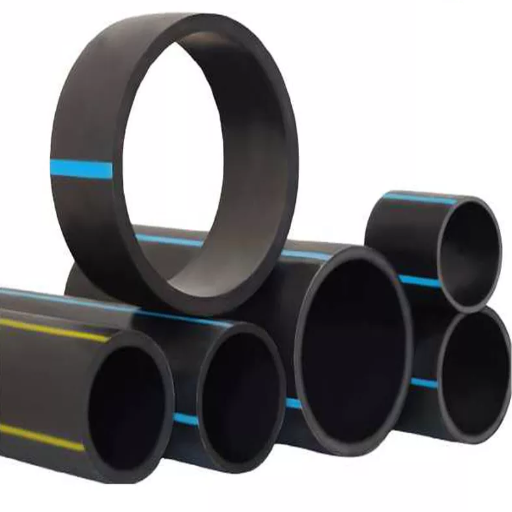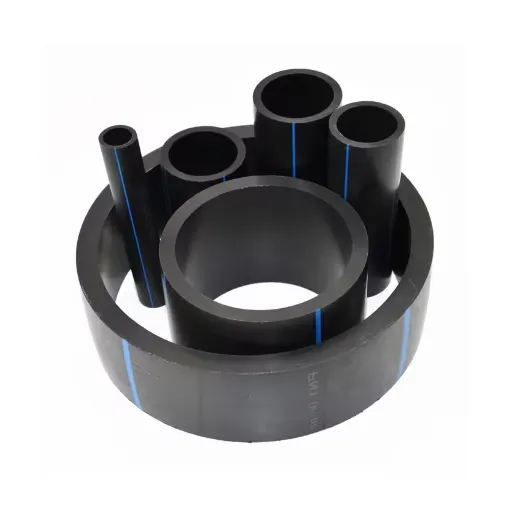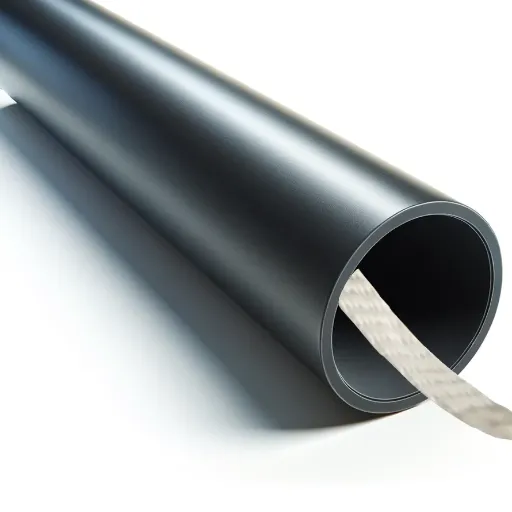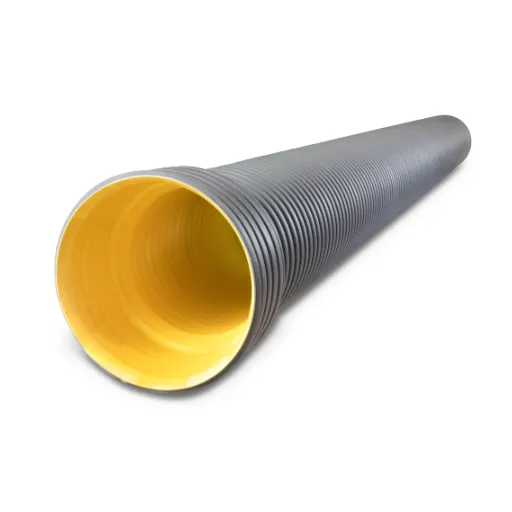When it comes to selecting the right piping solution for your project, understanding the dimensions and sizing of high-density polyethylene (HDPE) pipes is critical. HDPE pipes have become a preferred choice across numerous industries due to their durability, flexibility, and resistance to corrosion. However, navigating pipe sizes and compatibility can often seem daunting without clear guidance. This guide aims to demystify HDPE pipe dimensions by providing a detailed explanation of sizing standards, diameter classifications, and wall thickness variations. Whether you’re an engineer, contractor, or DIY enthusiast, this comprehensive overview will equip you with the knowledge to make informed decisions for your specific applications. Read on to uncover the key insights into HDPE pipe sizing and ensure seamless project execution.
What Are the Standard HDPE Pipe Sizes?
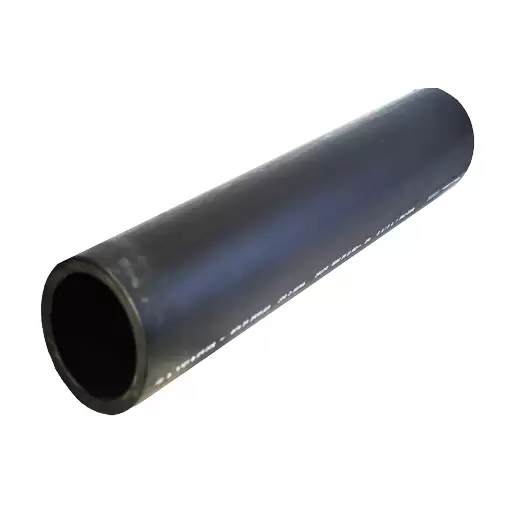
Exploring the Range of Pipe Sizes Available
Sockets of HDPE pipes are made in many sizes for different types of industries, municipalities, and even for domestic purposes. The general SSN rubber expansion joints pipe size is from 1/2 inch up to over 65 inches. They also make wide variety of sizes to suit different pressure ratings and flow capacities.
HDPE pipe dimensions are divided by different standards. Wall thickness classifications, often set by the Standard Dimension Ratio (SDR), determine the pipes pressure handling capabilities. For exanple, general pipe suffixes SDR 11 has thicker walls than SDR 17 pipes which means higher pressure withstand.
ASTM F714 describes the standards of manufacturing for polyethylene pipes utilized in pressurized applications, ensures accuracy and compliance to guidelines within manufacturing. While determining the sizes of HDPE pipes, factor like flow, operating pressure, and the environment where it’ll be placed must be taken into consideration to meet the needs of the project.
Comparing Common Pipe Diameters in the Market
Choosing the correct pipe diameter is critical to the design of transport systems and their efficiency and fluid delivery across different applications. The standard available diameters of pipes are from 0.5 inches to 12 inches, though specialized systems may exceed these values. A 0.5 to 2 inch diameter is normally found in residential buildings, whereas 4 to 12 inch diameters are used in industrial pipelines or municipal supply systems.
Each diameter option is geared towards a particular operational requirement, with smaller diameters being optimal for systems with lower flow rates. Higher diameters, on the other hand, are better for systems designed to lower frictional losses and increase volume. Framework and flows such as flow velocity, the Reynolds number, and pressure rating must also be factored in, along with basic material strength, to guarantee compliance with ASME, ASTM, or DIN standards to be met and reliability, sustainability, or performance to be ensured over the life cycle of the system.
New materials such as high-density polyethylene (HDPE), stainless steel, and polyvinyl chloride (PVC) have also increased the range of pipe diameters these pipes offer while increasing strength and durability, ultimately lowering maintenance requirements.
How to Use an HDPE Pipe Size Chart?
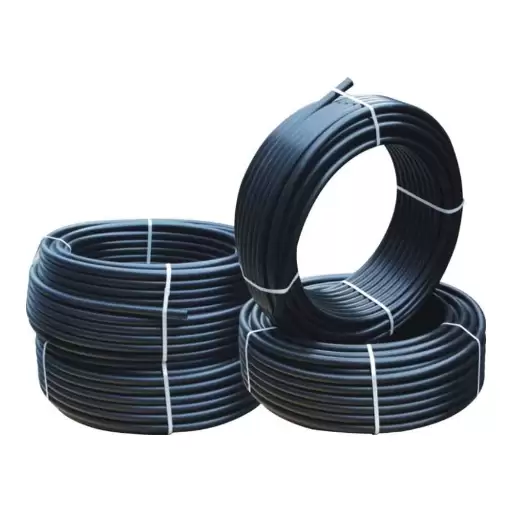
Understanding SDR and OD in Size
SDR is the ratio of the pipe’s outer diameter to its wall thickness. This ratio defines the pressure rating of the pipe; for example, a lower SDR value indicates a thicker wall, which means higher pressure capacity. OD, on the other hand, refers to the external measurement of the pipe’s diameter, which is a constant measurement that controls not only the compatibility of the fittings but also the connections.
The connection between the structural dimension ratio (SDR) and the outer diameter (OD) is crucial for the hydrostatic and structural capabilities of a pipe in scenarios including water distribution, gas transmission, and industrial system servicing. An HDPE pipe with SDR 11 has a standard OD of 160mm and it can be assigned different pressure ratings with SDR 17 compared to pipes of the same OD.
Correct calculation of SDR and OD in diameter sizing charts contributes not only to the selection of pipe attributes but also to estimating working stresses, lifetime under internal pressures, and adherence to ISO and ASTM standards. Such measures ensure optimal safety in intricate construction undertakings.
Tips for Selecting the Right Pipe Dimensions
- Know the Application Needs: Commence with looking at the specifics of your project like the type of fluid, its pressure, temperature, and flow rate. This guarantees that the chosen pipe size will not conflict with operational factors and safety margins.
- Choose Fluids Responsively: Choose the pipe materials for fluids that will not undergo corrosion, degradation, or contamination. These factors also need to be looked at: durability, tolerance to temperature, and environmental effects.
- Account for SDR and Pressure Ratings: Carefully examine the pipe’s Standard Dimension Ratio (SDR) and its corresponding pressure rating. Pipes with a lower SDR typically offer higher pressure resistance.
- Having Long Term Efficiency and Cost In Mind: Pipes which are oversized or too small are not efficient. Larger pipes lower flow velocity leading to increased expense and smaller pipes result in an excessive pressure drop. Finding the right balance leads to cutting from the expense without affecting efficiency through the means of hydraulic calculations.
- Plan for Thermal Expansion and Soil Movements: When planning for both buried and exposed pipes, consider issues such as thermal expansion or ground movements that may impact the pipes over a period of time. Incorporate permissive allowances and select materials that alleviates such stresses.
- Leverage Simulation Software: Apply sophisticated modeling tools to simulate pipe performance under different operating conditions, including temperature changes. These tools provide detailed insights for stress distributions, flow characteristics, failure modes, and beyond—all tailored to your unique piping system.
Taking into account an appropriate plan strategy alongside the technical specifications aids professionals in crafting safe, efficient, and dependable infrastructure tailored for the project at hand.
What is the Difference Between IPS and Metric Pipe Sizes?
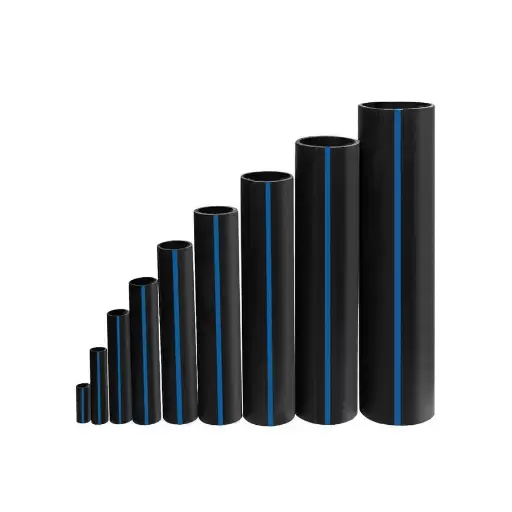
Comparing IPS Pipe with Metric Dimensions
It’s crucial to compare IPS (Iron Pipe Size) and metric pipe dimensions to ensure compatibility and efficiency in the piping systems. In this system, pipes are categorized as NOM or ‘nominal’ sized in relation to a schedule which is associated to pipe ID or inner diameter and wall thickness. On the other hand, metric pipe dimensions are given in millimeters (mm) and used OD or outer diameter as the primary sizing reference.
An example of one of the two systems’ differences is the specific unit of measurement and tolerance standards. An IPS 2-inch pipe has a variety of size changes associated with its inner diameter depending on its schedule (e.g., SM 40 or 80), while a metric pipe labeled as 50mm OD has a constant external diameter. If no proper adaptations, such as transition fittings or converters, are supplied to the system, blending the two systems is bound to cause fitting incompatibilities.
As far as the choices between the IPS and metric systems is concerned, the project’s placemnt, the compatibility of preexisting systems and the planned application of the project should all be considered to make sound decisions. Concerning both these sizing standards, the use of detailed size conversion charts and data tables aids in precise comparisons which considerably reduces error during installation and operation.
How Outside Diameter Influences Pipe Selection
The outside diameter (OD) of a pipe contributes greatly to its effectiveness in meeting specific application needs. The OD differs from nominal pipe size (NPS), metric slab, or classification-based pipe measurements; this value alleviates ambiguity concerns, as too large or too small will not fit. Incorrect OD fitting affects gaskets and pipe coupling selection, and as such, cannot secure alignment, meaning the fittings will not integrate seamlessly with the system. The pump’s structural integrity and ability to withstand loads are all subject to the accuracy of the OD, especially under high-pressure or extreme-weight conditions.
Apart from matching pipe materials to application requirements, it is paramount to note the relations of OD to the other values constituting the diameter such as the wall thickness, pipe schedule or standard dimension ratio (SDR) markings (SDR). Pipes with the same external diameters possess different wall thicknesses yield different pressure and flow rate capacities.
It is important in recalibrations or repairs knowing exactly how the OD is measured and has been done properly as alignment with the current pipeline which has been laid is crucial. Achieving the correct geometry of the structure will lessen the chances of having an erroneous addition, breakdowns or damages occurring due to improper installation.
Converting Between Metric and IPS for Global Projects
Complex global projects often expose pipelines to the metric and inch pound system (IPS) conflict. This is a result of differing measuring standards– the metric system utilizes millimeters (mm) while IPS uses inches and nominal pipe size (NPS). To aid in the prevention of expensive design, procurement, or assembly errors within international designs, recalculation of the two standards must be compatible.
One common approach involves heightening the estimation of pipe diameters (NPS in inches) to metric by multiplying by the 25.4 unit equivalent. The same procedure must be applied when adjusting wall thickness that varies according to schedules such as SCH 40 or SCH 80. Online pipe size charts or industry-specific conversion calculators serve as useful tools for easing the mapping procedure.
Moreover, material or tolerance differences may give rise to additional discrepancies under the two systems, requiring additional verification. Cross-checking international norms such as ISO 4200 and ANSI B36.10M becomes fundamental for taking into account operational limits like pressure rating alongside thermal expansion. The use of modern design software further assists in performing automated metric to IPS conversions, improving accuracy for engineering designs alongside stock control.
By integrating these practices with the most current resources and conversion tools, project outcomes optimally balance global demands with local specifics to reduce risks and improve consistency.
How to Determine Pipe Diameter Sizes for Your Project?
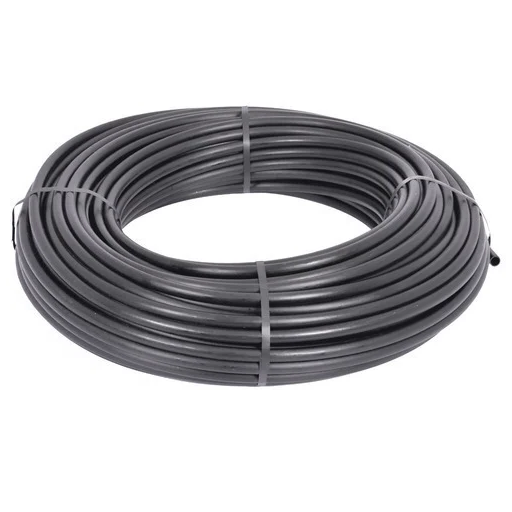
Understanding High-Density Polyethylene Characteristics
High-Density Polyethylene (HDPE) is a thermoplastic polymer with a notable strength-to-density ratio; it is HDPE’s strength, chemical resistance, and durability under various environmental conditions that make it prominent. HDPE is mainly used in piping systems, and its ease in transporting fluids is due to its low permeability and resistance to corrosive agents. Hydrocarbon chains, which make up the material, allow the polymer to have significant tensile strength while being flexible.
In addition to this, depending on the grade, HDPE has different melting points within 120°C to 180°C, making it feasible for moderate thermal range applications. Its lightweight characteristics makes it easy and less costly to transport and install, while increased impact and fatigue resistance prolong its lifespan in high-pressure systems. HDPE also outperforms metals in scaling and biological growth, which helps to maintain clear and consistent flow rates.
Looking at the molecular structure, the levels of crystallinity in HDPE increase its rigidity and barrier properties, which are ideal for industrial and potable water systems. The use of these technical properties increases efficiency and reliability in engineering projects with stringent industry standards and compliance requirements.
Importance of Wall Thickness in Pipe Selection
In various applications, piping systems have different performance requirements, and durability and wall thickness features significantly affect them all. A piping system, for example, must maintain an adequate internal pressure and resist external loads and environmental pressures. These factors depend greatly on the wall thickness of the system. Pipes with a wall thickness that is not sufficient tend to deform, burst, or undergo stress cracking in systems transporting high-pressure fluids or caustic materials over time.
Optimization of wall thickness has been greatly aided due to advanced materials such as HDPE and its high-pressure ratings. Pipes made out of HDPE have the advantage of maintaining thinner walls while achieving the same pressure class as their steel counterparts without structural failure. Such augmentations improve system efficiency while reducing the complexity and cost associated with Welt.
In oil and gas, water distribution, and chemical processing, selecting the correct wall thickness is critical.catastrophic failure is an absolute reality without proper cost analysis, adhering to industry standards, and thorough engineering analysis.
What are the Applications of Various HDPE Pipe Sizes?
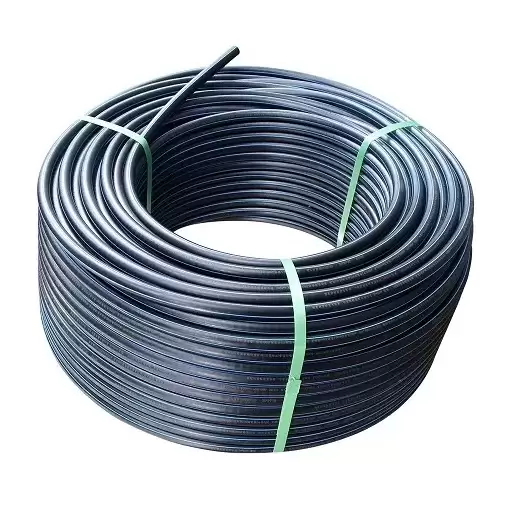
Exploring Sewer and Water Applications
Because of their superior strength, flexibility, and resistance to environmental stressors, High-Density Polyethylene (HDPE) pipes are widely employed in sewer and water systems. For sewer applications, HDPE pipes serve as an efficient means of waste and stormwater transport, particularly in regions with shifting soils or elevated groundwater levels. Their ability to withstand chemical corrosion and abrasion guarantees sustained performance, even under trying conditions, ideal for residential and industrial sewer networks.
Regarding water distribution, HDPE pipes are widely used because of their impermeability and leak-proof joints, which greatly lower the chances of leakage. These pipes are highly flexible for potable water uses as they meet various international drinking water safety requirements like NSF/ANSI 61. Moreover, these pipes can be installed quickly due to their lightweight, which in turn saves money on labor costs and lowers the duration of the project.
Due to recent developments in the manufacturing of HDPE, the performance of big diameter pipes has increased with water flow capacity. Now more than ever, HDPE pipes with a 24-inch diameter or more are used for municipal water mains and waste treatment facilities, which emphasize high-volume flow and structural durability. Coupled with the long lifespans of these materials, the cost-efficiency makes HDPE the preferred choice for water and sewer infrastructure modern developments.
Choosing the Right PE Pipe Sizes for Industrial Use
Selecting the right size of PE pipes for industrial uses is not as simple as it seems because it requires balancing operational efficiency, safety, and the longevity of costs. The main considerations are the application, flow rate, operating pressure, and chemical nature. For pipes used in industries like oil and gas that transport high-pressure fluids, there is a need for thicker-walled, high SDR rating, low stress, larger diameter PE pipes to mitigate the risks of failure.
Calculating flow rate for achieving required pipe performance has a bearing on operational efficiency. It is more economical to operate with lower diameter pipes to reduce expenses in material and construction for medium portable operations. Otherwise, larger diameter pipes that are more expensive to manufacture are best suited for high-volume transport.
Temperature extremes, thermal expansion, and UV exposure are some additional environmental factors that need attention when deciding on using a specific type of PE pipe. The chemical composition of the pipe’s materials must also be analyzed. This is one of the critical requirements for agronomy and chemical processing, and makes high-density polyethylene the most popular choice because of its resistance to chemical corrosion and environmental cracking.
Benefits of HDPE Diameters in Infrastructure Projects
When it comes to piping systems in infrastructural frameworks, an advantage of HDPE pipes is strategically optimizing varying diameters for multitasking within a singular system. One of the primary benefits is its remarkable flow capacity because of the smooth internal lining, which minimizes friction and pressure losses in lengthwise pipelines. Consequently, HDPE pipes are best used with high-capacity aqueducts, sewage pipes, and irrigation system channels. Besides, the variance in diameters permits engineers to design entire pipeline systems that make use of specific load and flow values, thus utilizing resources effectively without material wastage.
Moreover, the construction materials for these projects aid in overcoming traditional problems associated with employing steel and concrete; the agility and lower density of HDPE, even in wider dimensions, render these pipes easier to lift, move, install, and transport. These factors help lessen the time consumed for projects, fps-cameras, and reduce costs, especially in remote or difficult-to-access areas. The most recent activities focus on the growing use of municipal drainage and stormwater systems with large-diameter HDPE pipes, which are sought for environmental stress resistance and flow optimization.
Finally, their resistance to corrosion, abrasion, chemical exposure, and other forms of damage guarantees prolonged performance, especially in harsh operating conditions. The development of manufacturing processes has also improved the structural strength of HDPE pipes so that these can be depended upon even in pressurized systems. Thus, choosing suitable diameters of HDPE pipes has emerged as one of the most politically and economically impactful practices of modern infrastructure construction.
References
Frequently Asked Questions (FAQs)
Q: What are the common polyethylene pipe sizes used in various applications?
A: Polyethylene pipe sizes range from small diameters such as 16mm to larger sizes like 1600mm. The common range of pipe sizes typically used is from 32mm to 1200mm, covering a wide range of applications, including water distribution and gas distribution systems.
Q: How does the pressure class impact the choice of polyethylene pipe sizes?
A: The pressure class determines the pipe’s ability to withstand internal pressure. Polyethylene pipe sizes and pressure class ratings are essential for ensuring the pipe meets the demands of specific applications. Higher pressure classes are used for more demanding systems, while lower pressure classes are suitable for less demanding applications.
Q: What is meant by the nominal bore of a pipe?
A: The nominal bore of a pipe refers to the approximate inside diameter of the pipe, which is used to standardize pipe sizes. It is a critical factor in determining the flow capacity of the pipe.
Q: How does the inside diameter differ from the standard pipe diameter?
A: The inside diameter of a pipe is the actual measurement across the hollow interior, while the standard pipe diameter refers to a nominal size used for classification. The inside diameter is crucial for calculating flow rates and pressure losses in a piping system.
Q: Why is it important to consider the internal pipe diameter when selecting a polyethylene pipe?
A: The internal pipe diameter is crucial because it affects the flow rate and pressure drop of the fluid moving through the pipe. Selecting the correct internal diameter ensures efficient system operation and helps avoid issues such as inadequate flow or excessive pressure loss.
Q: What are the typical applications for a 32mm HDPE pipe?
A: A 32mm HDPE pipe is commonly used in smaller-scale applications such as residential water supply lines, irrigation systems, and some gas distribution systems. Its size makes it suitable for areas that require flexibility and ease of installation.
Q: How does the manufacture of high-density polyethylene impact the pipe’s performance?
A: The manufacture of high-density polyethylene (HDPE) impacts the pipe’s strength, flexibility, and resistance to chemicals and environmental factors. These properties make HDPE pipes suitable for a wide range of applications, including underground installations and areas with fluctuating temperatures.



